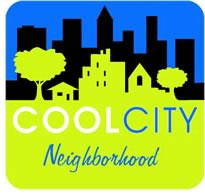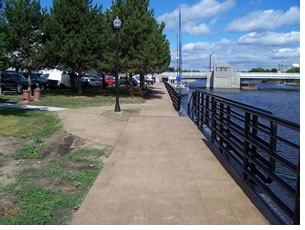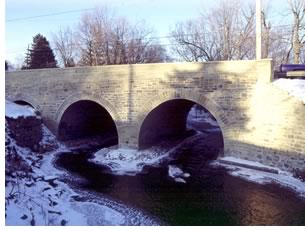

08/2005
Cool Cities initiative is hot program in Michigan
A governors’ group is lauding the State of Michigan for its efforts to integrate “active community policies”: development, land use, and transportation strategies that help ensure the built environment supports physical activity. The policies, the National Governors Association reports, often generate important health, economic, and environmental benefits to boot.
 Plans
to take charge of active community strategies in Michigan started in
the first year of Gov. Jennifer Granholm’s (D) term as she worked
with state leaders to identify growth priorities and address the negative
affects of sprawl. Through the bipartisan Michigan Land Use Leadership
Council (MLULC), state leaders took a “holistic look at land-use
issues,” says Michigan spokesperson Maura Campbell, which resulted
in recommendations for active communities and context-sensitive design.
Plans
to take charge of active community strategies in Michigan started in
the first year of Gov. Jennifer Granholm’s (D) term as she worked
with state leaders to identify growth priorities and address the negative
affects of sprawl. Through the bipartisan Michigan Land Use Leadership
Council (MLULC), state leaders took a “holistic look at land-use
issues,” says Michigan spokesperson Maura Campbell, which resulted
in recommendations for active communities and context-sensitive design.
In December 2003, the Michigan Council for Arts & Cultural Affairs’ ninth annual conference, “Creating Cool,” attracted a sold-out crowd of more than 1,300, according to the Michigan Web site. Richard Florida, PhD, author of The Rise of the Creative Class, articulated the merits of an economic development strategy “that puts ‘creative’ people first, acknowledging the link between economic prosperity and the ‘Creative Class.’” In 2004, the state Department of Labor and Economic Growth and the governor’s office completed a Web-based survey, which drew responses from 14,000 recent college graduates to inform what type of lifestyle they are looking for in a community.
 Cool Cities combines more than 100 community improvement grants, tax
credits, loans, and assistance programs from 14 different state agencies,
which many are using to implement healthy-living initiatives. The result
is access to millions of dollars in assistance and a $100,000 grant to
begin the planning process. For the city of Alpena in the Northeast corner
of Michigan’s Upper Peninsula, that means funds for signage along
the community’s pathways to create a pedestrian-oriented heritage
walkway along Lake Huron and the Thunder Bay National Marine Sanctuary
and Underwater Preserve, which is home to one of the nation’s most
historically significant collections of shipwrecks, says Eric Cline,
assistant city manager. The heritage walkway provides links between downtown
public and private development projects with an existing 13.5-mile bicycle
path. Two parks serve as anchor legs to link all public and private development
adjacent to the Huron.
Cool Cities combines more than 100 community improvement grants, tax
credits, loans, and assistance programs from 14 different state agencies,
which many are using to implement healthy-living initiatives. The result
is access to millions of dollars in assistance and a $100,000 grant to
begin the planning process. For the city of Alpena in the Northeast corner
of Michigan’s Upper Peninsula, that means funds for signage along
the community’s pathways to create a pedestrian-oriented heritage
walkway along Lake Huron and the Thunder Bay National Marine Sanctuary
and Underwater Preserve, which is home to one of the nation’s most
historically significant collections of shipwrecks, says Eric Cline,
assistant city manager. The heritage walkway provides links between downtown
public and private development projects with an existing 13.5-mile bicycle
path. Two parks serve as anchor legs to link all public and private development
adjacent to the Huron.
Working together
“It’s very liberating to have everyone working together,” Campbell
says of the effort to get all the stakeholders at the table at the beginning
of any planning process. “The initiative helps connect things that
a few years ago people would consider disparate, but they’re really
not.” Having all the stakeholders at the table also means more walkable
communities that are universally designed and welcoming at all ages.”
 AIA Michigan has worked with state officials to roll out the initiative.
Past AIA Michigan President and national AIA Board member Celeste Novak,
AIA, got involved last year with the Cool Cities initiative. She said
AIA Michigan modeled its presentation after the ideas in Malcolm Gladwell’s
book, The Tipping Point, with the notion that architects are able to “tip
the character of communities, to see pieces of buildings that if you
change would bring change to the whole community.”
AIA Michigan has worked with state officials to roll out the initiative.
Past AIA Michigan President and national AIA Board member Celeste Novak,
AIA, got involved last year with the Cool Cities initiative. She said
AIA Michigan modeled its presentation after the ideas in Malcolm Gladwell’s
book, The Tipping Point, with the notion that architects are able to “tip
the character of communities, to see pieces of buildings that if you
change would bring change to the whole community.”
Novak suggests building healthy living into the planning process by overlaying concepts on master plans and studying where natural links may be. With highways as gateways to communities, Novak advises, it’s important for communities to think about the image they want to project once people leave the interstate. “Do you see the regional character or local character?” she questions.
Context-sensitive solutions
As an example, Granholm issued an executive directive to implement a
context-sensitive solution program at the Transportation Department.
The policy was the result of a year-long process involving about 60
stakeholders, including AIA Michigan. The draft policy was approved
in March of this year and seeks to develop transportation systems that
fit their physical settings and address resident needs, such as better
walking accessibility, historic character, neighborhood unification,
and other active-community features.
 The Transportation Department uses visualization techniques to convey
possible planning options, says Margaret Barondess, environmental section
manager. This practice, which involves an interdisciplinary team of the “right
people at the right time,” informs the decision makers that a “road
is more than just pavement.” It also influences roadside amenities,
including bicycle paths and pedestrian walkways. “Scoping it,” and
including context-sensitive solutions in the design phase helps the team
to see how the road fits into their community, Barondess says. The process
also gets input up front, which greatly reduces the possibility for dissatisfied
customers (and costly revisions) later on.
The Transportation Department uses visualization techniques to convey
possible planning options, says Margaret Barondess, environmental section
manager. This practice, which involves an interdisciplinary team of the “right
people at the right time,” informs the decision makers that a “road
is more than just pavement.” It also influences roadside amenities,
including bicycle paths and pedestrian walkways. “Scoping it,” and
including context-sensitive solutions in the design phase helps the team
to see how the road fits into their community, Barondess says. The process
also gets input up front, which greatly reduces the possibility for dissatisfied
customers (and costly revisions) later on.
The price the state pays for this program is one of “national interest,” Barondess says. The theory is that “costs balance out over all programs.” Savings can be seen in staff time, less pavement to produce and maintain, and fewer objections at the end of the project.
Copyright 2005 The American Institute of Architects.
All rights reserved. Home Page ![]()
![]()
 |
||
Check
out Michigan’s Cool Cities Initiatives online.
|
||